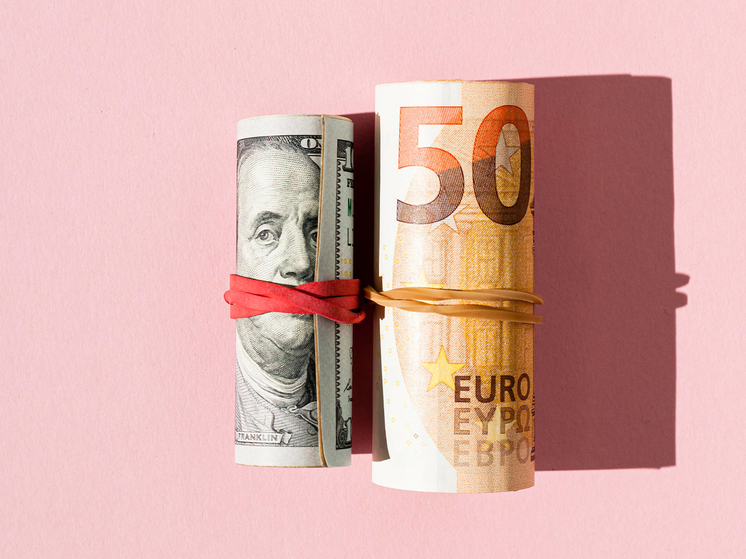Why Western sanctions against trade in dollars and euros did not lead to a financial crisis
On June 13, for the first time in modern history, the Bank of Russia established the official exchange rate of the ruble to the dollar and euro without exchange trading. The regulator took this step due to the US Treasury imposing sanctions against the Moscow Exchange, the National Clearing Center (NCC) and the National Settlement Depository (NSD) the day before. It is curious that the rates of toxic currencies set by the regulator turned out to be lower than those on the last day of trading on the stock exchange. The Central Bank of the Russian Federation itself noted that the reference point for calculations is the exchange rate of the yuan. How the new currency realities will affect the Russian economy and whether it is now worth investing in dollars and euros, MK found out from the head of the analytical department of the BKF bank, Maxim Osadchy.
 Photo: ru.freepik.com
Photo: ru.freepik.com
— The most important thing is that there was no panic in the financial market, as happened after the announcement of the first sanctions immediately after the start of the SVO. The population, with very few exceptions, did not storm bank branches or gut ATMs. Since the beginning of the CWO, the Russian economy has largely adapted to the “sanctions normality”, and the new sanctions, despite their “thermonuclear” nature, failed to cause a crisis. Although in strength they are quite comparable to the first sanctions introduced immediately after the start of the SVO. But in two years the necessary experience has been accumulated in order to cope with new challenges; effective tools have been created to counteract sanctions pressure.
— Since the beginning of the SVO, there has been an active process of de-dollarization and de-euroization of the Russian economy. On the Russian foreign exchange market, non-cash dollars and euros have already been largely replaced by the yuan. In addition, sanctions against the Moscow Exchange and NCC were expected back in September 2022: the Russian market had enough time to prepare for them and minimize the damage from these sanctions.
— Spreads (the difference between selling and buying rates) for dollars and euros widened sharply, but by the end of June 13 they had decreased significantly. Exchangers no longer offer dollars at 200, 150 or even 100 rubles, as was the case in the morning of June 13. The trend of narrowing spreads continues.
—Narrowing spreads make it economically unprofitable for the emergence of a “black market” for cash currency, similar to the one that existed in the early 90s.
— Indeed, this important indicator of the foreign exchange market has ceased to be formed on the basis of the exchange rate due to the cessation of exchange trading in dollars and euros. And if previously relatively large volumes of cash currency could be bought and sold at a rate close to the official one, now this practical property of the official rate has been lost. In particular, for this reason, we should not expect a restoration of the narrow spreads that existed before June 12.
Due to the cessation of exchange trading in dollars and euros, the Russian foreign exchange market has reduced transparency and “has become cloudy.” The costs of enterprises engaged in foreign economic activity and the population associated with the purchase and sale of dollars and euros have increased.
— It is clear that in the first days after the introduction of such powerful sanctions, increased population demand for cash currency. Moreover, currency purchases are carried out mainly due to the outflow of household funds from banks. Accordingly, banks are forced to respond to this outflow by increasing interest rates on deposits.
“Given this shock, an increase in the key rate is almost inevitable. But now it is no longer up to 17%, as could have been expected before June 12. An increase to 18% or even 20% is possible.
— Naturally, the prices of foreign goods purchased for euros and dollars will rise. Import logistics will become more complicated, new schemes will have to be invented and new intermediaries will have to be paid. Also, the import price will include the increased costs of importers for the purchase of currency due to the transition from the exchange to the over-the-counter currency market.
— It is not at all necessary that the official exchange rate will move in the near future to the level of 100 rubles per dollar. On June 13, the official ruble exchange rate increased, partly because Russian enterprises are getting rid of non-cash dollars and euros. A similar situation arose after the announcement of partial mobilization in September 2022, when they were afraid of sanctions against NCC and the Moscow Exchange. In the wake of these fears, the dollar exchange rate dropped to almost 50 rubles per dollar.
— Until tensions ease, it hardly makes sense to buy dollars and euros at an inflated rate. If possible, wait at least a few days, or better yet, weeks.
— The principle of currency diversification of savings remains unchanged. In the current conditions, “folk” investors should not hold non-cash dollars and euros, but cash is quite possible. As for the yuan, it should be avoided. In any case, until it becomes a freely convertible currency.


